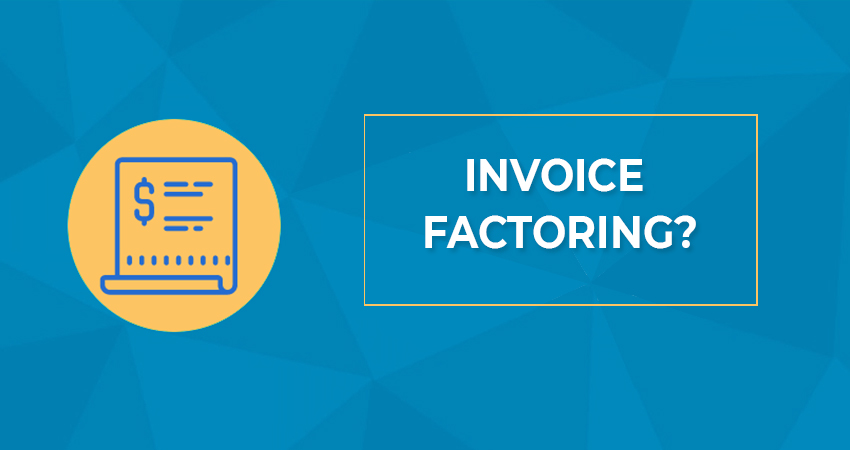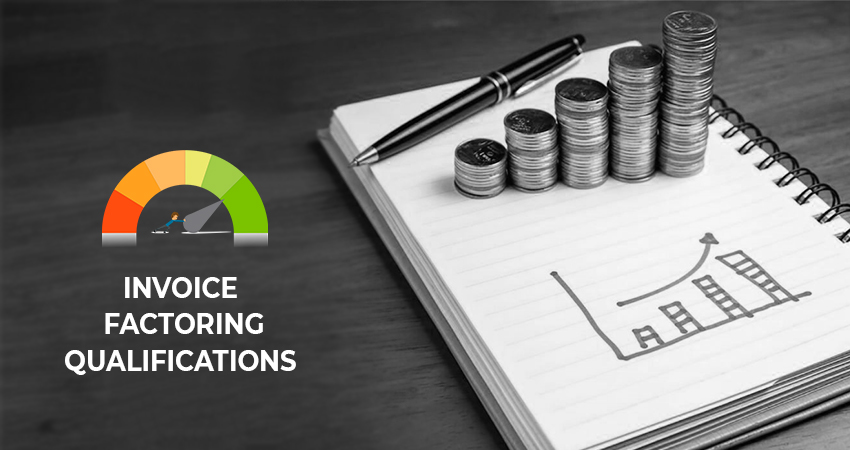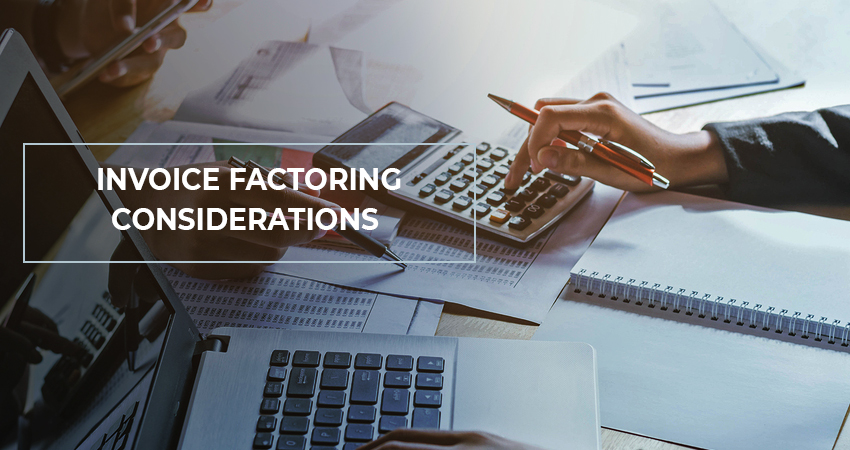Invoice Factoring: The Ultimate Guide to Financing your Small Business

Delayed payments from customers can put your business in a serious situation of a cash crunch. Lack of working capital can cause cash-flow restraints and affect the bills, payroll, investment in equipment, or technology. It can even prevent the business from hiring more staff to scale operations. There is a solution to all your cash flow problems, that is, invoice factoring.
In a lot of cases, customers don’t pay the businesses for the goods or services immediately. Such customers may take 30, 60, or even 90 days to pay off the unpaid invoices. This is a common occurrence in B2B transactions. In such situations, it doesn’t make sense for the business with outstanding receivables or unpaid invoices to wait until the customer makes the payment.
If this is the case then the business will inevitably face serious cash crunk and shortage of working capital. Invoice Factoring lets such businesses get cash advances on their unpaid invoices. Instead of waiting for weeks and months for the payment, they can get paid in a matter of days. This helps them utilize the funds that they have already learned to manage and grow their business.
In this article, we will discuss all that you need to know about Invoice Factoring and how you can go about it. This guide will answer all your queries regarding Invoice Factoring, how does it work, and how can it be beneficial for you.
What is Invoice Factoring?

Invoice Factoring is a type of debtor finance. Under Invoice Factoring, a business sells its accounts receivables or unpaid invoices to an external financing company. Such a financing company is known as a factor or factoring company. Factoring companies usually advance 70% to 90% of the invoice value upfront. The remaining balance is remitted once the customer has paid for the invoice, after deducting a factoring fee.
Let us take an example to understand it better. Let’s say you own a Construction goods store and sell goods to another business, creating a $20,000 invoice. The customer agrees to pay off the amount in 30 days. But, you need cash right now since you had planned the purchase of new equipment and machinery to expand operations.
In such a situation, you can turn to a bank for a loan but that would require you to have an impeccable credit score and collateral that the lender can sell if you default. Or, you can turn to an Invoice Factoring company. The company buys your invoice for a 2% factoring fee and agrees to advance 80% of the invoice within a few days. So, the factoring company will pay you $16,000 initially. Then, the factoring company collects the payment from your customer when it’s due (30 days). Once it has collected the payment, it’ll deduct the $400 factoring fee and transfer you the remaining $3,600.
So, your business would get paid $19,600 for a $20,000 invoice but you get it much before the actual payment is due.
Importance of Cash Flow Forecasting

Cash flow forecasting is a method of predicting the future financial position of your company based on anticipated accounts receivable and expenses. You can use cash flow forecasting to determine your financial position at any given time and to effectively prepare for upcoming costs.
Some expenses, such as insurance, utility bills, and payroll, are generally the same each month. Other costs, such as unexpected repairs, equipment breakdown, or a lawsuit, may take you by surprise. While cash flow forecasting can’t prepare you for every financial scenario, it can help you be better prepared for potential shortfalls.
Cash flow forecasting works on the principle that it is always best to be conservative and anticipate all the possible risks that you and your business might face. If done right, it can help you strengthen your business’s cash flow and working capital situation.
Types of Invoice Factoring
Let us explore different factoring options and terms available for your business.
Spot Factoring and Whole Ledger Factoring
Spot factoring enables you to factor a single invoice on a one-time basis without long-term contracts. This allows for more flexibility. However, fees tend to be higher with spot factoring.
Whole Ledger Factoring, also known as Full Turn Factoring, requires a business to submit all client invoices for factoring. Rates are generally lower than Spot factoring, but most whole ledger factors will charge a termination fee if you decide to cancel your contract with them.
Recourse Factoring and Non-recourse Factoring
In Recourse factoring, business owners assume the risk if their customer fails to pay the outstanding invoice on time. If the customer does not pay back the invoice that you submitted to the factoring company, you must cover the costs and purchase back the invoice from the factor. Recourse factoring is less risky for the factor. It is also generally a more affordable option than non-recourse factoring.
In the case of Non-recourse factoring, business owners shall not be liable if their customers fail to pay the outstanding invoice. However, the fees tend to be higher because the factoring company takes on more risk. Moreover, most non-recourse factors will avoid accepting invoices from your customers who have low credit scores and poor payment history.
Difference Between Invoice Factoring and Invoice Financing
Invoice Factoring involves the selling of a business’s outstanding invoices (accounts receivables) at a discount to a factoring company in return for a cash advance. The amount of the advance is usually 70% to 90% of the sold invoice. Factoring provides more flexibility than traditional bank financing because the cash you receive is dependent on the invoices you submit and is technically a debt-free source of financing.
Whereas, Invoice Financing does not involve business owners selling their accounts receivables to the factoring company. Instead, the business owners use their accounts receivables as collateral to qualify for a loan. The amount of the loan depends on the strength and value of your invoices. Invoice financing presents more risk for small businesses because the invoices are still under the business owner’s ownership.
Pros and Cons of Invoice Factoring
The Pros
- Quick Cash & Better Cash Flow: Invoice factoring can provide working capital quickly to help cover a funding gap caused by slow-paying customers or delayed payments. Also, you can keep loyal customers on longer payment terms but still improve your cash flow to help you expand your business.
- Easy Approval: Invoice factoring provides financing to companies that might not be able to get capital from other traditional sources, because of poor personal credit, a lack of collateral, or a limited operating history. Usually, factoring companies are only concerned with the value of the invoices you are looking to factor and the creditworthiness of your customers.
- No Collateral: Invoice factoring is unsecured financing. This means it doesn’t require collateral. Collateral is an asset such as real estate or inventory that the lender can seize if you fail to pay.
The Cons
- Lack of Direct Control: Since the invoice factoring company may collect on the invoices directly, you need to ensure that it is ethical and fair when dealing with your customers. If the factoring company does not behave ethically, then you might lose your customer.
- Customer’s Bad Credit: The factoring company may need to verify the creditworthiness of your customers. If your customers have a history of late or missed payments, or if the business has weak revenue, you may not be approved for the financing. The factoring company expects to get paid back, just like other types of lenders.
Invoice Factoring Process
Let us take a look at the step-by-step Invoice Factoring process to understand how it works.
- Once a company sells the product or service to their customer, they issue an invoice with net terms.
- The company then sells the invoice to the Invoice Factoring company.
- In return for the invoice, the company receives an advance payment, usually between 70-90% of the value of the invoice.
- With the cash on hand, the company can take on more work, scale operations, pay the staff, or buy materials, supplies, and inventory.
- Once the customer pays the outstanding invoice, the business receives a rebate for the remainder of the funds, minus a fee that is based on the term and value of the invoice.
- So, with this system of Invoice factoring, all three parties benefit. The company gets cash up front, their customer gets favorable payment terms, and the factoring company earns a fee.
Invoice Factoring Qualifications and Requirements

Invoice Factoring has very low qualifications and requirements when compared with more traditional means of raising finance like term loans. At GConnectPro, we provide Invoice Factoring services at rates starting as low as 1%. You can get approved as quickly as within 24 hours and get factoring lines up to $5 million.
To avail Invoice Factoring services from GConnectPro, you need to have a FICO score of 530 or above and your business should be at least 3 months old. Additionally, your business must be B2B and must have earned $40,000 in average monthly revenue.
Invoice Factoring – Considerations and Things to take care of

Certain things must be cleared before you decide to go for Invoice Factoring with a particular Factor. You must ensure that you take all the points mentioned below into consideration before applying for invoice factoring. It is a crucial decision that can mean the difference between a good cash flow position and a working capital crisis. Let us take a look at a few things you must consider and take care of before applying for Invoice Factoring.
Terms and Rates
The fee and rate structures for factoring companies are either variable or flat.
In case of a variable fee structure (tiered fee structure) factors will discount a small percentage of the invoice for as long as the invoice is outstanding. This implies that the longer your invoice goes unpaid the more fees it’ll accrue over time. Although variable fee structures are more complicated to calculate, they can be more cost-effective depending on the profile of your business, because the rate is based on the risk of the account.
With a flat fee structure, the rate stays the same no matter how overdue the invoice is. However, flat-rate fees are generally higher than the variable fee structures. The flat-rate fee is calculated by multiplying the face value of an invoice with the flat fee.
As a general rule, the more invoices you factor, the lower your rate will be.
Costs or Fees
Some invoice factoring companies have hidden fees or penalties. You must know what triggers the penalties so that you can avoid them. Let us take a look at some additional types of fees that may be mentioned in your factoring agreement.
- Termination Fees: If you have signed a long-term contract with a factor and decide to cancel it, you may have to pay a sizable cancellation fee. Cancellation fees can range from 3% to 10% of your factoring credit line.
- Maintenance Fees: This fee is charged to keep your account running with the factoring company. The maintenance fee is usually charged monthly.
- Monthly Minimum Fees: Some factors require businesses to commit to factoring a certain amount of invoices per month. The factoring company will charge an additional fee if a business fails to factor enough invoices.
- Due Diligence Fees: This fee is charged whenever the factor needs to verify the background of your client. The factor will ensure that your client does not have any existing liens, is in good credit standing, has no unpaid taxes, and more.
Factoring Agreement
The Invoice Factoring Agreement is a financial contract that expounds on the terms and costs of your factoring plan. It might include complex terms and provisions. You need to study and thoroughly understand any agreement before signing.
You must double-check the rates and keep an eye out for crafty terminologies and hidden terms.
Keep in mind that some factoring agreements impose high cancellation fees. Long-term contracts also may require you to factor a certain number of invoices.
So, you must always read your factoring agreement carefully in its entirety a couple of times to understand all the terms and conditions. Only when you’ve done this should you consider signing the agreement.
Time to Funding
Some factoring companies can take months to set up your business account. Whereas others, like GConnectPro, can get your account set up in a matter of 2-3 days. Once your account is set up, you can get funds within a few hours. Online financing companies have made due diligence more efficient with automation. This implies that the modern, online factors are now able to verify your customers, your invoices, and any existing liens on your business faster and more efficiently.
Once your account is created, most modern factors can have the funds deposited in your bank account within hours after invoice submission.
Final Words
In invoice factoring, a business sells its accounts receivable or outstanding invoice(s) to a third party at a discount. A company will often factor its receivable assets to meet its present and immediate cash needs instead of waiting for payment based on original contract terms. Factoring invoices is also utilized to mitigate credit risk.
GConnectPro provides online invoice factoring services for business owners who want flexibility, speed, and transparency in rates and terms. We can help you set up a factoring line for your business that provides access to funds based on your outstanding invoices.
If you’re interested in learning more about invoice factoring, leave a comment below or give us a call at (302) 298-0024 or write to us.


Write a reply or comment
You must be logged in to post a comment.